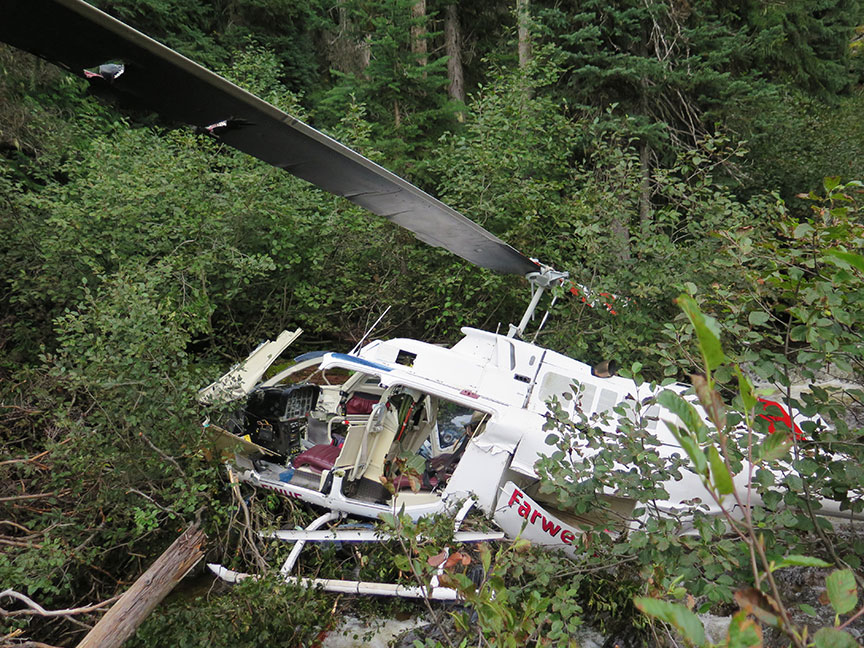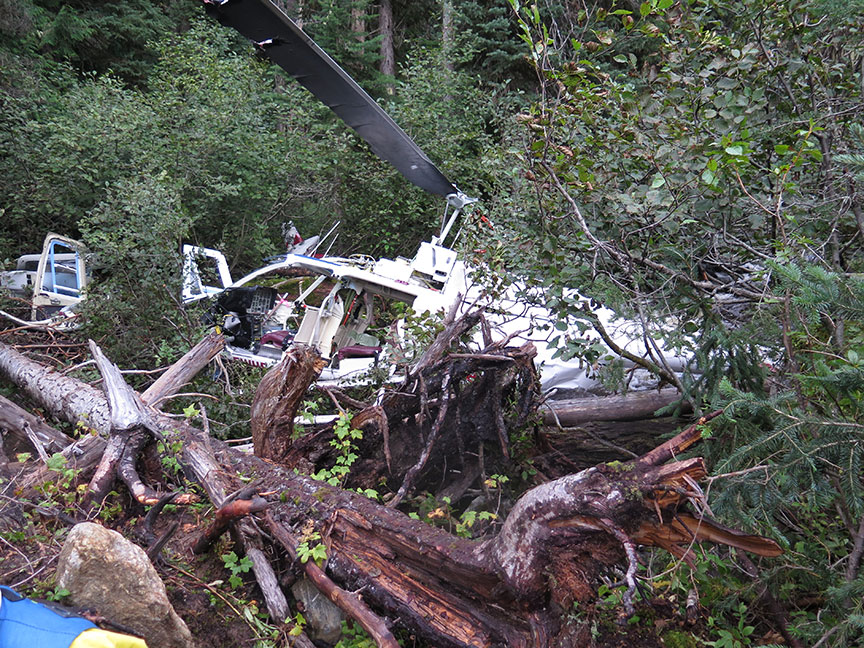Collision with terrain
Far West Helicopters Ltd.
Bell 206B (Helicopter), C-FWHF
Deception Mountain, British Columbia, 3.6 nm SSE
The occurrence
The Far West Helicopters Ltd. Bell 206B helicopter (registration C-FWHF, serial number 1525) was returning to a remote base camp situated 3.6 nautical miles south-southeast of Deception Mountain, British Columbia, at an elevation of 4100 feet above sea level. The flight took place during daylight hours, with only the pilot on board. At 1358 Pacific Daylight Time, as the helicopter was approaching a service pad, the pilot perceived a power fluctuation. In response, the pilot conducted a straight-in approach to the service pad and applied cyclic and collective control inputs to remain clear of trees. The helicopter pitched up to an extreme nose-high attitude. There was a popping or banging sound, and several pieces of debris separated from the helicopter. The helicopter began to descend and rotate to the left, eventually striking terrain approximately 200 feet northeast of the service pad. Base camp personnel witnessed the event and called 911. The pilot was seriously injured and was evacuated by air ambulance. The helicopter was substantially damaged. The emergency locator transmitter activated. There was no post-impact fire.
Media materials
News release
TSB releases investigation report into a September 2016 collision with terrain of a Bell 206B helicopter near Deception Mountain, British Columbia
Read the news release
Investigation information
Download high-resolution photos from the TSB Flickr page.
Class of investigation
This is a class 3 investigation. These investigations analyze a small number of safety issues, and may result in recommendations. Class 3 investigations are generally completed within 450 days. For more information, see the Policy on Occurrence Classification.
TSB investigation process
There are 3 phases to a TSB investigation
- Field phase: a team of investigators examines the occurrence site and wreckage, interviews witnesses and collects pertinent information.
- Examination and analysis phase: the TSB reviews pertinent records, tests components of the wreckage in the lab, determines the sequence of events and identifies safety deficiencies. When safety deficiencies are suspected or confirmed, the TSB advises the appropriate authority without waiting until publication of the final report.
- Report phase: a confidential draft report is approved by the Board and sent to persons and corporations who are directly concerned by the report. They then have the opportunity to dispute or correct information they believe to be incorrect. The Board considers all representations before approving the final report, which is subsequently released to the public.
For more information, see our Investigation process page.
The TSB is an independent agency that investigates air, marine, pipeline, and rail transportation occurrences. Its sole aim is the advancement of transportation safety. It is not the function of the Board to assign fault or determine civil or criminal liability.


